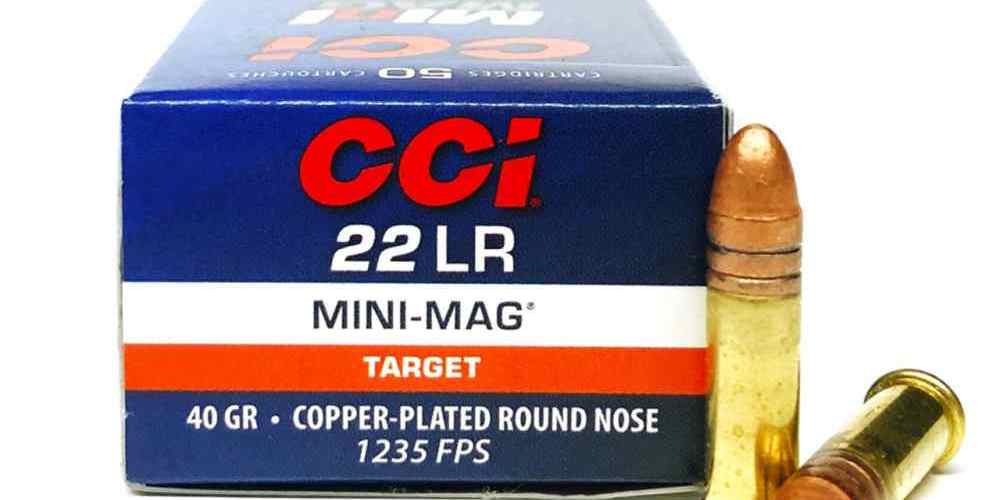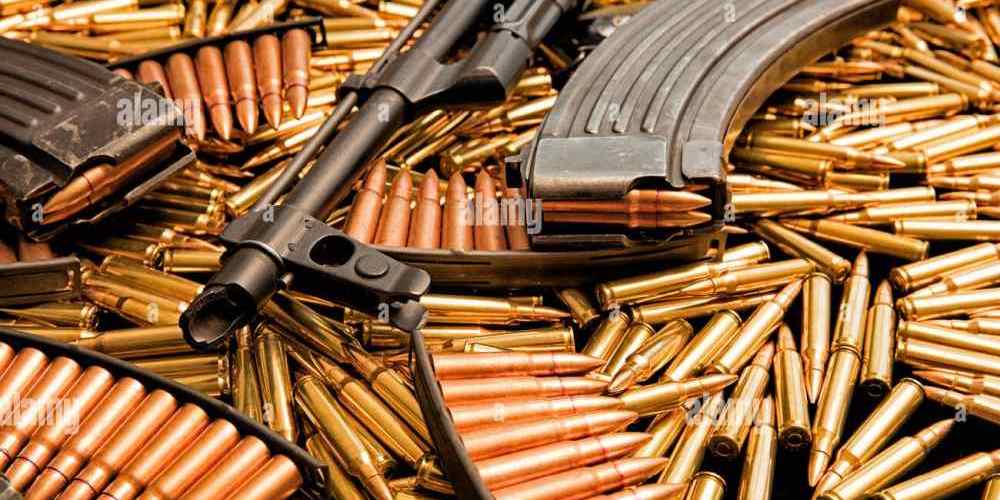“Unlock the language of firepower with A Shooter’s Glossary: Rifle Ammunition Terminology.”
Bullet Types and Designs
When it comes to rifle ammunition, there are a wide variety of bullet types and designs to choose from. Understanding the terminology associated with these bullets can help you make informed decisions when selecting the right ammunition for your shooting needs.
One of the most common types of rifle bullets is the full metal jacket (FMJ) bullet. This type of bullet features a soft lead core that is completely encased in a harder metal, typically copper. The jacket helps to prevent deformation of the bullet as it travels down the barrel and through the air, resulting in more consistent accuracy. FMJ bullets are often used for target shooting and training purposes.
Another popular type of rifle bullet is the hollow point (HP) bullet. These bullets have a hollow cavity at the tip, which causes the bullet to expand upon impact with a target. This expansion creates a larger wound channel, making hollow point bullets ideal for hunting and self-defense applications. The increased stopping power of hollow point bullets makes them a popular choice among many shooters.
For shooters looking for a balance between the penetration of FMJ bullets and the expansion of HP bullets, there are also soft point (SP) bullets. These bullets feature a soft lead core with a partial metal jacket that leaves the tip exposed. This design allows the bullet to expand upon impact, while still retaining some of the penetration capabilities of FMJ bullets. Soft point bullets are often used for hunting medium to large game animals.
In addition to these common bullet types, there are also specialty bullets designed for specific purposes. For example, armor-piercing (AP) bullets are designed to penetrate hard targets such as body armor or vehicle armor. These bullets typically feature a hardened steel or tungsten core that is capable of punching through tough materials.
Tracer bullets are another specialty type of bullet that are designed to leave a visible trail of light as they travel through the air. Tracer bullets are often used by military forces for training purposes, as they allow shooters to track the trajectory of their shots and make adjustments as needed.
Frangible bullets are designed to break apart upon impact with a target, reducing the risk of overpenetration and collateral damage. These bullets are often used in indoor shooting ranges or other environments where ricochets are a concern.
In conclusion, understanding the terminology associated with rifle ammunition can help you make informed decisions when selecting the right bullets for your shooting needs. Whether you are target shooting, hunting, or engaging in self-defense, there is a wide variety of bullet types and designs to choose from. By familiarizing yourself with the different options available, you can ensure that you are using the most appropriate ammunition for your specific shooting requirements.

Cartridge Components and Construction
When it comes to understanding rifle ammunition, it’s important to familiarize yourself with the terminology used to describe the various components and construction of a cartridge. This knowledge can help you make informed decisions when selecting ammunition for your rifle and ensure that you are using the right ammunition for your shooting needs.
One of the key components of a rifle cartridge is the bullet. The bullet is the projectile that is fired from the rifle and is typically made of lead or a lead alloy. Bullets come in a variety of shapes and sizes, each designed for specific purposes. For example, a round-nose bullet is ideal for hunting large game, while a hollow-point bullet is designed to expand upon impact, creating a larger wound channel.
Another important component of a rifle cartridge is the casing. The casing is the outer shell that holds all of the other components of the cartridge together. Casings are typically made of brass, although they can also be made of steel or aluminum. The casing serves to protect the powder and primer inside the cartridge and helps to seal in the gases produced when the cartridge is fired.
Inside the casing, you will find the powder. Powder is a propellant that ignites when the primer is struck, creating a controlled explosion that propels the bullet out of the rifle barrel. There are two main types of powder used in rifle cartridges: smokeless powder and black powder. Smokeless powder is the most common type of powder used today, as it produces less residue and is more consistent in its performance.
The primer is another important component of a rifle cartridge. The primer is a small metal cup that contains a chemical compound that ignites when struck by the firing pin. This ignition sets off the powder inside the casing, causing it to burn and propel the bullet out of the rifle. There are two main types of primers used in rifle cartridges: boxer primers and berdan primers. Boxer primers are the most common type used in modern cartridges, as they are easier to reload and are more widely available.
In addition to these components, rifle cartridges also come in a variety of sizes and calibers. The size of a cartridge is typically denoted by a number, such as .223 or .308. This number refers to the diameter of the bullet in inches. Caliber, on the other hand, refers to the internal diameter of the rifle barrel and is typically measured in millimeters. It’s important to match the caliber of your rifle with the caliber of the ammunition you are using to ensure proper function and accuracy.
Overall, understanding the terminology used to describe rifle ammunition can help you make informed decisions when selecting ammunition for your shooting needs. By familiarizing yourself with the components and construction of a cartridge, you can ensure that you are using the right ammunition for your rifle and shooting style. So next time you’re shopping for rifle ammunition, take a moment to consider the terminology and make an educated choice.
Caliber and Bullet Weight
When it comes to rifles and ammunition, there are a plethora of terms and jargon that can be overwhelming for beginners. Understanding the terminology associated with rifle ammunition is crucial for any shooter looking to improve their marksmanship and overall shooting experience. In this article, we will delve into the world of rifle ammunition terminology, focusing specifically on caliber and bullet weight.
Caliber is one of the most important aspects of rifle ammunition. It refers to the diameter of the bullet that a particular rifle is designed to fire. Caliber is typically measured in inches or millimeters, with common calibers ranging from .22 to .50. The caliber of a rifle determines the size and weight of the bullet it can fire, as well as its overall performance and effectiveness.
Bullet weight is another crucial factor to consider when choosing rifle ammunition. Bullet weight is measured in grains, with one grain equaling approximately 1/7000th of a pound. The weight of a bullet can have a significant impact on its trajectory, velocity, and terminal ballistics. Heavier bullets tend to have more momentum and penetration, while lighter bullets may have higher velocities and flatter trajectories.
When selecting rifle ammunition, it is important to consider both caliber and bullet weight to ensure optimal performance. Different calibers and bullet weights are designed for specific purposes, such as hunting, target shooting, or self-defense. Understanding the relationship between caliber and bullet weight can help shooters make informed decisions when choosing ammunition for their rifles.
Transitioning from caliber and bullet weight, it is important to note that the type of rifle ammunition used can also affect accuracy and performance. There are various types of rifle ammunition available, including full metal jacket (FMJ), hollow point (HP), and soft point (SP) bullets. Each type of bullet has its own unique characteristics and is designed for specific applications.
Full metal jacket bullets are typically used for target shooting and military applications. They have a copper or steel jacket that covers the lead core of the bullet, providing increased penetration and reduced expansion upon impact. Hollow point bullets, on the other hand, are designed for hunting and self-defense. They have a hollow cavity at the tip of the bullet, which causes it to expand upon impact, creating a larger wound channel and increasing stopping power.
Soft point bullets are a hybrid between full metal jacket and hollow point bullets. They have a partially exposed lead core, which allows for controlled expansion upon impact while still retaining some of the penetration characteristics of a full metal jacket bullet. Soft point bullets are commonly used for hunting medium to large game animals.
In conclusion, understanding the terminology associated with rifle ammunition, specifically caliber and bullet weight, is essential for any shooter looking to improve their shooting skills. By considering these factors when selecting rifle ammunition, shooters can optimize their performance and achieve greater accuracy and effectiveness on the range or in the field. Whether you are a seasoned marksman or a novice shooter, having a solid grasp of rifle ammunition terminology can enhance your shooting experience and help you make informed decisions when choosing ammunition for your rifle.
Ballistic Coefficients and Trajectory
When it comes to understanding rifle ammunition, there are a plethora of terms and concepts that can be overwhelming for beginners. One important aspect of rifle ammunition that shooters should be familiar with is ballistic coefficients and trajectory. These terms play a crucial role in determining the performance of a bullet in flight, and understanding them can help shooters make more informed decisions when selecting ammunition for their rifles.
Ballistic coefficient, often abbreviated as BC, is a numerical value that represents the aerodynamic efficiency of a bullet. In simple terms, a higher BC means that a bullet will retain its velocity and energy better as it travels through the air, resulting in flatter trajectories and better long-range performance. BC is influenced by factors such as bullet shape, weight, and velocity, and manufacturers often provide BC values for their ammunition to help shooters compare different options.
Trajectory, on the other hand, refers to the path that a bullet takes from the muzzle of the rifle to the target. Factors such as bullet weight, velocity, and BC all play a role in determining the trajectory of a bullet. Understanding the trajectory of a bullet is crucial for shooters, as it allows them to make accurate adjustments to their sights or scopes to ensure that their shots hit the target consistently.
When selecting rifle ammunition, shooters should pay close attention to the BC values of different bullets. Bullets with higher BC values will generally have flatter trajectories and better long-range performance, making them ideal for shooting at extended distances. However, it’s important to note that BC values are not the only factor to consider when selecting ammunition. Factors such as bullet weight, velocity, and intended use should also be taken into account to ensure that shooters choose the right ammunition for their specific needs.
In addition to BC values, shooters should also consider the trajectory of a bullet when selecting ammunition. Understanding how a bullet will behave in flight can help shooters make accurate adjustments to their sights or scopes, ensuring that their shots hit the target consistently. Factors such as wind, elevation, and distance to the target can all affect the trajectory of a bullet, so shooters should be prepared to make adjustments as needed to compensate for these variables.
Overall, understanding ballistic coefficients and trajectory is essential for shooters who want to maximize the performance of their rifle ammunition. By paying attention to factors such as BC values and trajectory, shooters can make more informed decisions when selecting ammunition and improve their accuracy and consistency on the range. So next time you’re shopping for rifle ammunition, be sure to consider these important factors to ensure that you’re getting the best performance possible from your rifle.
Terminal Ballistics and Stopping Power
When it comes to understanding rifle ammunition, there are a plethora of terms and phrases that can be overwhelming for beginners. However, having a solid grasp of these terms is crucial for anyone looking to improve their shooting skills and knowledge. In this article, we will delve into the world of rifle ammunition terminology, focusing specifically on terminal ballistics and stopping power.
Terminal ballistics refers to the study of what happens to a projectile once it hits its target. This includes factors such as penetration, expansion, and energy transfer. Stopping power, on the other hand, is a term used to describe the ability of a bullet to incapacitate a target quickly and effectively. Understanding these concepts is essential for anyone looking to make informed decisions about their ammunition choices.
One of the most important factors to consider when discussing terminal ballistics and stopping power is bullet construction. There are two main types of bullets: full metal jacket (FMJ) and hollow point. FMJ bullets are typically used for target shooting and military applications, as they offer good penetration but limited expansion. Hollow point bullets, on the other hand, are designed to expand upon impact, creating a larger wound channel and increasing stopping power.
Another important term to be familiar with is bullet weight. Bullet weight is measured in grains, with heavier bullets typically offering better penetration and energy transfer. However, lighter bullets may offer higher velocities and flatter trajectories, making them ideal for long-range shooting. It is important to find the right balance between bullet weight and velocity to achieve optimal terminal performance.
Muzzle velocity is another crucial factor to consider when discussing terminal ballistics and stopping power. Muzzle velocity refers to the speed at which a bullet leaves the barrel of a rifle. Higher muzzle velocities generally result in better terminal performance, as they increase the energy transfer upon impact. However, it is important to remember that higher velocities can also lead to increased recoil and muzzle blast.
Bullet caliber is also an important consideration when discussing terminal ballistics and stopping power. Caliber refers to the diameter of the bullet, with larger calibers typically offering better stopping power. However, larger calibers also tend to have more recoil and muzzle blast, making them less suitable for some shooters. It is important to find a caliber that strikes the right balance between stopping power and shootability.
One final term to be familiar with is bullet expansion. Bullet expansion refers to the way a bullet deforms upon impact with a target. Hollow point bullets are designed to expand upon impact, creating a larger wound channel and increasing stopping power. Proper bullet expansion is crucial for achieving quick and effective incapacitation of a target.
In conclusion, understanding rifle ammunition terminology is essential for anyone looking to improve their shooting skills and knowledge. By familiarizing yourself with terms such as terminal ballistics, stopping power, bullet construction, bullet weight, muzzle velocity, bullet caliber, and bullet expansion, you can make informed decisions about your ammunition choices. Whether you are a beginner shooter or a seasoned veteran, having a solid grasp of these concepts will help you become a more effective and knowledgeable marksman.




